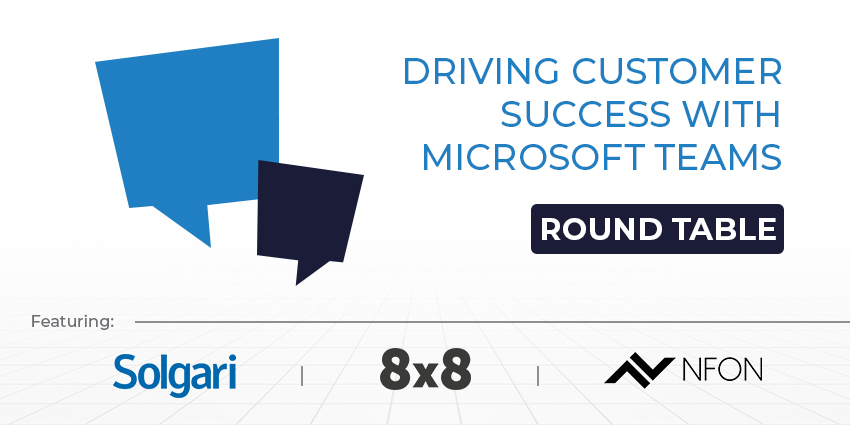Hybrid workforce security is a critical concern for almost every organization today. Although many companies are beginning to implement return-to-work mandates, most still believe the future of work will be hybrid. In fact, 75% of the Fortune 100 leverage a hybrid work schedule.
Unfortunately, while a hybrid working strategy can significantly reduce workplace operational costs, and improve employee engagement, it can create new threats for businesses to overcome.
One report found that 82% of security leaders operating with a hybrid work model have gaps in their security strategy. Ultimately, if companies want to enable hybrid work and protect themselves from regulatory fines and emerging threats, they need the right strategy.
Here are some of the most significant trends influencing hybrid work security in 2024 and why you should consider them when implementing new security strategies.
1. The Rise of Digital Communications Governance
The way we communicate, collaborate, and share data has changed drastically in recent years. Today’s teams aren’t just reliant on phone calls and emails to interact with in-office and remote colleagues. They’re also turning to messaging apps like WhatsApp, video conferencing tools, SMS, and various other systems. This means we’re sharing larger volumes of data on different channels.
Analysts and industry experts like Gartner and G2 believe this shift will lead to a rising focus on “Digital Communications Governance” (DGC) solutions. Ultimately, DGC technologies are systems that help companies regulate and secure communication processes across multiple channels, boosting defence and compliance.
As we move into the years ahead, companies will need to ensure they have the right DGC strategy in place to maintain visibility into their entire communications network and protect hybrid workers, regardless of which device or communication channel they use.
2. Zero Trust Network Access Reigns Supreme
A comprehensive approach to hybrid workforce security requires companies to rethink how they secure their devices, data, and employees. Old-fashioned network security strategies, which prioritized protecting the “perimeter” of a technology stack, aren’t appropriate for a cloud-first workplace. As a result, the zero-trust model is gaining more attention.
The Zero Trust Network Access (ZTNA) model involves using technology that enables organizations to authenticate and authorize every user before they gain access to a system. Advanced ZTNA solutions, enabled by SD-WAN and SASE solutions, empower companies to evaluate every network connection carefully. Instead of simply assuming that employees should have access to a network when they attend an office environment, companies can implement robust access control policies.
Many leading providers of collaboration and communication platforms, contact center tools, and similar solutions are now supporting this approach. The zero-trust strategy will be particularly crucial for hybrid companies designing office neighborhoods and hot-desking environments.
3. New Threats Emerge for Flexible Teams
Ever since hybrid and remote work became commonplace, criminals have been exploring increasingly sophisticated ways to steal data from organizations. In the last couple of years, phishing attacks have skyrocketed, particularly as generative AI emerges to give criminals more efficient ways of creating personalized content for scam messages.
AI is even giving criminals more ways to trick companies. Today, criminals can use AI voice generation tools to create deepfakes that can bypass biometric authentication methods and steal sensitive data. This means businesses need to rethink how they manage access controls, authenticate users, and protect their information.
It’s not just the rise of new technology and AI that’s presenting more complex challenges in the world of hybrid workforce security. Different approaches to hybrid working are creating new threats too. For instance, many organizations are now embracing bring your own device (BYOD) and bring your own meeting (BYOM) strategies.
These methods give employees more freedom to choose which technology they want to use for work. However, the use of personal devices and preferred meeting platforms in the office leads to new challenges to consider. Not every device or system will have the same security standards, encryption methods, and access controls in place.
4. Artificial Intelligence Creates Risks and Opportunities
As mentioned above, artificial intelligence is one of the most significant trends affecting hybrid workforce security. New forms of generative AI and intelligent algorithms are allowing criminals to craft more sophisticated attacks that sidestep traditional security practices.
Additionally, simply leveraging generative AI tools in the workplace can create new security threats. Hybrid employees who share the wrong data with generative AI tools, often accidentally, can facilitate massive security breaches and compliance issues.
However, there’s a positive side to the rise of AI in the workplace, too. Intelligent tools can help companies proactively monitor security threats on a massive scale, notifying business leaders of suspicious activities and risks. Working together, AI and automation can help give businesses greater visibility into their threat landscape.
The right technologies can inform businesses when software needs to be patched, monitor risky activity on endpoints used by hybrid workers, and predict upcoming threats.
5. Growing Focus on Hybrid Workforce Security Education
The right technology is crucial to enabling comprehensive hybrid workforce security in 2024. Companies need to ensure that they’re implementing the right software and solutions to encrypt crucial conversations, limit access to essential data, and proactively monitor threats.
However, simply investing in the latest technology isn’t enough on its own. Stanford Research shows 88% of data breaches are caused by employee mistakes. Human error is still a major concern for any team, and companies need to ensure their employees are aware of how to mitigate the latest threats.
Today’s employees don’t always know how to differentiate between secure apps and unsafe communication tools. They can’t always determine when a message or email is legitimate or just a sophisticated phishing attempt. What’s more, when they’re outside of the office, they don’t have people looking over their shoulders to ensure they’re following security best practices.
Implementing comprehensive hybrid workforce security policies and training team members on how to stay secure will be critical as the workplace continues to evolve.
6. Consolidation in Hybrid Workforce Security Tools
Ultimately, the evolving worlds of hybrid work, communication, and collaboration will require companies to take a new approach to managing security. Reactive strategies won’t be enough to defend the workplace in the years ahead. Companies will need to take a proactive approach to mitigating countless changing threats.
To accomplish this, businesses will need to move beyond using disconnected security and compliance tools. Rather than implementing different security systems, recording tools, vaults, and eDiscovery solutions for every team or platform, companies will need to take a unified approach.
They’ll need to ensure all of the resources they use for monitoring conversations, examining threats, and implementing security policies are fully aligned. The rise of digital communications governance solutions that enable end-to-end monitoring, endpoint control, and e-discovery and archiving systems should allow for a more consolidated approach in the years ahead.
Additionally, through consolidating their tools, companies will be able to improve their security standing. They should also be able to more effectively leverage their data to make intelligent decisions that enhance future compliance, user experiences, and customer satisfaction levels.
Adapting to Hybrid Workforce Security Trends
Even with growing return-to-work mandates, the future of work is likely to be flexible. This means companies will need to implement new hybrid workforce security strategies to ensure they can protect every communication channel, every data source, and every employee.
Fortunately, the rise of consolidated security systems, digital communications governance tools, and AI-powered technologies should give companies the tools they need to thrive in this landscape.







